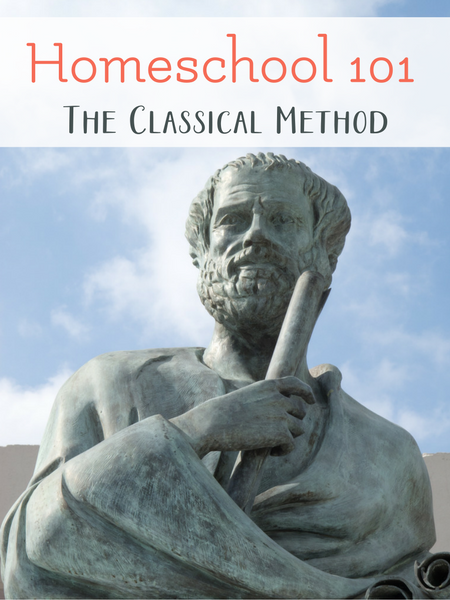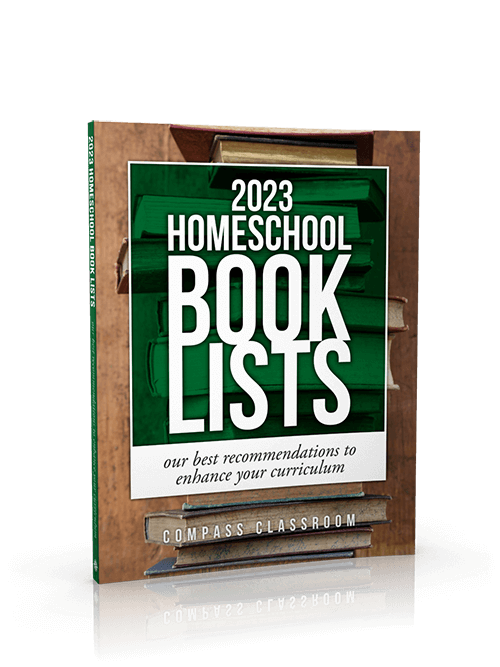
There is an air of dignity that surrounds the label “classical education”. There are also many ways to differentiate what that really means.
For our purpose here, I am going to tell you about the classical method as it relates to a classical christian education rather than a classical humanist education which is what you would get if you chose to educate by only studying the ancient classical authors of Greek and Roman times.
The classical method employees the methods of the ancient teachers and desires to achieve the same goals of knowledge, understanding, and wisdom, but not necessarily through the classical materials.
Our homeschool is what I like to call classically Charlotte. We are heavily influenced by Charlotte Mason and classical education methodology. They are extremely complimentary.
The Classical Method
The classical method uses the trivium as its main focus. The trivium consists of three stages: grammar, logic, and rhetoric. These three stages are experienced both as the child matures, and are experienced during the act of learning throughout each subject as the child learns the facts at hand, mulls them over and begins to understand and ask questions, and then assemble the resulting conclusions into an idea.
A classical student will receive formal training in Latin, Logic, Greek, and Western Literature. The goal is to train the student to think for himself and become a future leader. The Socratic Method is instilled in the student to develop a critical thinker. Think of the student/teacher relationship of Aristotle and Alexander the Great as an example of this method.
Stages of the Trivium
- GRAMMAR: (knowledge) The first stage lays the foundation for language beginning in early elementary school. During grades 1 through 4, students will learn facts such as phonics, grammar rules, spelling rules, math facts, historical facts, scientific facts, and more. The facts build the foundation for the next stage of the trivium.
- LOGIC: (understanding) The second stage, beginning around 5th grade, focuses on when a child begins to ask “why” and starts to think in terms of cause and effect along with appreciation of abstract thought. The child begins to analyze what he is reading and he is encouraged to express this in his writing. This stage begins to shape critical thinking in the student.
- RHETORIC: (wisdom) By high school, the student learns to build on the facts from the first stage and the logical thought from the second stage, to begin presenting his ideas in a clear way that shows original and critical thought.
The classical method focuses on a consistent pattern of education whereby students are introduced to history and science in a consistent repetition so each subject can be studied within the three stages of the trivium. For example, students will learn Ancients, Middle Ages, Renaissance and Reformation, and Modern Times in that order three times within their 12 years of education. This looping of subjects allows for excellent mastery.
Resources for Classical Home Eduation
Teaching the Trivium: Christian Homeschooling in a Classical Style The Well-Trained Mind: A Guide to Classical Education at Home
The Well-Trained Mind: A Guide to Classical Education at Home Consider This: Charlotte Mason and the Classical Tradition
Consider This: Charlotte Mason and the Classical Tradition The Lost Tools of Learning: Symposium on Education
The Lost Tools of Learning: Symposium on Education Beauty for Truth’s Sake: On the Re-enchantment of Education
Beauty for Truth’s Sake: On the Re-enchantment of Education The Well-Educated Mind: A Guide to the Classical Education You Never Had
The Well-Educated Mind: A Guide to the Classical Education You Never Had
Classical Curriculum Options
This is by no means an extensive list, but these are the most prominent that adhere to a classical philosophy. We are using several Memoria Press items this year and they are exceptional.
Memoria Press Classical Education
Are you considering a classical approach to your homeschool?
Find all our Homeschool 101 posts here:








Leave a Reply